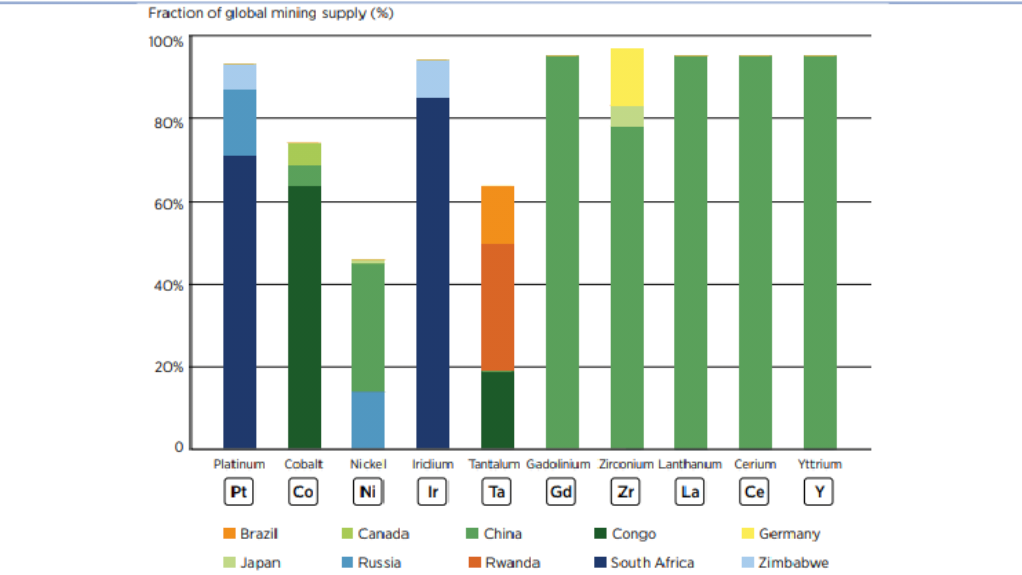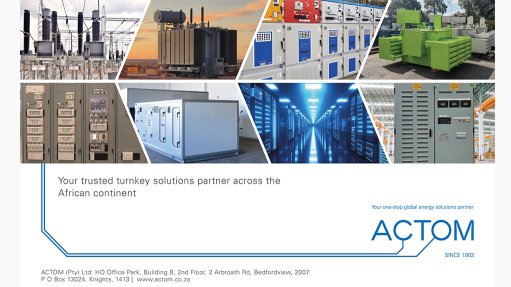Hydrogen has advantage of relatively cheap energy storage, DNV study finds
JOHANNESBURG (miningweekly.com) – Both hydrogen and battery technologies are expected to operate in the power sector, but in different areas, says independent risk management and assurance firm DNV.
Hydrogen is expected to play a role as a form of dispatchable generation, which allows for the seasonal storage or production of energy – producing hydrogen in seasons with excess electricity generation from renewables, to then converting it back to electricity during periods with reduced wind and solar availability.
Batteries are expected to dominate in providing short-term energy storage solutions, improving grid stability and balancing supply and demand within the daily cycles of renewable electricity generation and changing demand.
In this sense the two technologies complement each other in helping to ensure a secure supply of electricity and to enable the decarbonisation of the electricity grid, the DNV report states.
The driving force in this relationship is the cost of storage relative to the cost of power production. Hydrogen has the advantage of relatively cheap storage in terms of the equipment used for each kilowatt hour stored, and storage can be scaled up significantly to increase the discharge time for a given discharge rate.
In a utility-scale battery storage application, the battery modules themselves make up nearly 50% of the cost, and therefore, increasing the capacity has a large capital expenditure impact.
Hydrogen is expected to play a big role in decarbonising international shipping, however, not in a pure form but as ammonia and e-methanol. Both ammonia and e-methanol are expected to be cheaper to produce, store and transport than other synthetic fuels and have a higher density by volume than hydrogen. Significant development is needed before either fuel can be in widespread use, leaving some uncertainty in the final energy mix of the sector.
The use of hydrogen in a fuel cell or in an internal combustion engine (ICE) is feasible and commercial vehicles are both available and in development today. Fuel cell electric vehicle (which are generally platinum based) uptake is expected to be concentrated in high payload heavy goods vehicles, some coaches and off-road vehicles, along with some fleet vehicles where high utilisation and rapid refuelling is required.
Hydrogen vehicles may take a significant market share in the heavy-duty sectors, such as long-distance, high payload heavy good vehicles and coach services where battery technology is unable to feasibly meet the performance requirements. In addition to higher energy capacity, hydrogen vehicles can be refuelled within minutes, making them preferable for applications requiring high utilisation and fast turnaround times, for instance ambulance services.
In many applications, greater long-term potential is seen in fuel cell vehicles rather than hydrogen ICE vehicles, but with fuel cell costs currently high. As a result, sectors including construction and agricultural are, in the near term, investing in hydrogen ICE vehicles. Hybrid solutions utilising fuel cells as range extenders for battery electric vehicles may be the preferred solution in specific applications, however, typically, the increased cost and minimal refuelling infrastructure is expected to limit the market share for hybrid vehicles, the report states.
Key countries for the supply of fuel cell components include the US, Germany and Japan. Fuel cells can be disassembled, and the materials recycled. Fuel cell recycling is mainly focused on the recovery of the expensive precious metal catalysts.
Canadian company Ballard Power Systems state they can typically reclaim more than 95% of the precious metals and that most of the remaining components in a fuel cell stack can be recycled using ordinary recycling processes. Similarly to the recycling of battery cells, increased automation of recycling systems of these technologies is key and is something that is being increasingly targeted, the DNV report states.
Japan, South Korea and Singapore are exploring burning the hydrogen-derivative ammonia in coal-fired power plants.
The UK government is reportedly working towards the launch of a fully functioning low-carbon hydrogen certification scheme before 2025. A new consultation paper grapples with challenging design choices including chain of custody and scheme participation, while emphasising the importance of international collaboration and interoperability.
In the UK, there is currently no established processes for recovering these high value materials, however it is an emerging area and Hydrogen Insight reported on Friday that UK government mulling plans to subsidise hydrogen power stations. This would be part of an effort to keep on line existing unabated fossil-gas-fired power plants and provide back-up supply for increasingly large proportions of renewable energy.
The UK government is said to view hydrogen as an important component of its future power system to provide flexible low carbon generation capacity as it integrates more renewables.
“Hydrogen to power could be a large source of firm and flexible low-carbon generation that is capable of extended duration running to compliment intermittent renewables. It also provides an additional route for the decarbonisation of existing unabated combustion generation,” a UK government spokesperson told Hydrogen Insight.
TotalEnergies is joining forces with three maritime companies to jointly design a vessel that can carry 150 000 m3 — or 10 500 t — of liquid hydrogen. Defining the vessel’s specifications, including operational profile, will reportedly by carried out by TotalEnergies. Membrane containment to keep the liquid hydrogen below minus 253°C will be the responsibility of GTT. LMG Marin will design the vessel in accordance with Total and GTT’s specifications, and Bureau Veritas will review the design and conduct a risk assessment.
In South Africa, TotalEnergies, Anglo American, Sasol, Engie and Bambili Energy are working on hydrogen freight corridor from Limpopo province, through Gauteng to KwaZulu-Natal, beginning this year for 20 small and three trucks.
Hydrogen Fuel News reported on Friday that Japanese car manufacturer Toyota is introducing a five-seater hydrogen-powered Toyota Crown sedan alongside the company’s flagship fuel cell electric vehicle, the Mirai. The likely platinum-based hydrogen-powered Toyota Crown sedan will be available for purchase in Japan from autumn 2023.
Article Enquiry
Email Article
Save Article
Feedback
To advertise email advertising@creamermedia.co.za or click here
Announcements
What's On
Subscribe to improve your user experience...
Option 1 (equivalent of R125 a month):
Receive a weekly copy of Creamer Media's Engineering News & Mining Weekly magazine
(print copy for those in South Africa and e-magazine for those outside of South Africa)
Receive daily email newsletters
Access to full search results
Access archive of magazine back copies
Access to Projects in Progress
Access to ONE Research Report of your choice in PDF format
Option 2 (equivalent of R375 a month):
All benefits from Option 1
PLUS
Access to Creamer Media's Research Channel Africa for ALL Research Reports, in PDF format, on various industrial and mining sectors
including Electricity; Water; Energy Transition; Hydrogen; Roads, Rail and Ports; Coal; Gold; Platinum; Battery Metals; etc.
Already a subscriber?
Forgotten your password?
Receive weekly copy of Creamer Media's Engineering News & Mining Weekly magazine (print copy for those in South Africa and e-magazine for those outside of South Africa)
➕
Recieve daily email newsletters
➕
Access to full search results
➕
Access archive of magazine back copies
➕
Access to Projects in Progress
➕
Access to ONE Research Report of your choice in PDF format
RESEARCH CHANNEL AFRICA
R4500 (equivalent of R375 a month)
SUBSCRIBEAll benefits from Option 1
➕
Access to Creamer Media's Research Channel Africa for ALL Research Reports on various industrial and mining sectors, in PDF format, including on:
Electricity
➕
Water
➕
Energy Transition
➕
Hydrogen
➕
Roads, Rail and Ports
➕
Coal
➕
Gold
➕
Platinum
➕
Battery Metals
➕
etc.
Receive all benefits from Option 1 or Option 2 delivered to numerous people at your company
➕
Multiple User names and Passwords for simultaneous log-ins
➕
Intranet integration access to all in your organisation

















